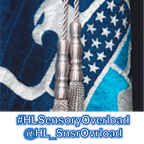Is That A Nuke in Your Pocket? Or Are You — Well, You Know…
Introduction to the Secure The Cities Program
HLSensory Overload: We’re Everywhere You’re Going To Be
“The Securing the Cities” (STC) program is a key component of the Department of Homeland Security’s efforts to protect the nation from terrorists threat,” said Secretary Napolitano. “The STC program has helped to build a capability among first responders to help detect illicit radiological and nuclear weapons or materials in a major metropolitan area.”[1] The program focuses on deepening defenses by providing radiation detection equipment throughout the metropolitan regions, such as New York, New Jersey, and Connecticut; as well as emplacing detection equipment at entry points into New York City’s bridges and tunnels. The STC program provides thousands of first responders with detection devices throughout the New York City region, in order to detect radiological and nuclear threats, even though no credible threat has ever been posed, and an actual nuclear device with proper lead shielding would not be detectable by the installed infrastructure.
The Securing the Cities (STC) Program seeks to reduce the risk of a successful deployment of a nuclear weapon against a major metropolitan regions in the United States by establishing sustainable capability among state, local, and tribal agencies to detect and report unauthorized radiological/nuclear (rad/nuc) materials within their jurisdictions supporting the Global Nuclear Detection Architecture (GNDA). The STC Program has three primary goals: (1) to enhance regional capabilities to detect, identify and interdict nuclear materials that are out of regulatory control; (2) to guide the coordination of Federal, State, local and tribal entities in their roles defined by the GNDA; and (3) to encourage participants to sustain base nuclear detection program over time. [2]
One aspect of addressing this goal is providing assistance to State and local jurisdictions in and around major metropolitan areas that will enable these entities to build capabilities by: — Leveraging current technologies and deploying them regionally in a coordinated manner; — Designing, acquiring, and deploying the components of an operationally viable regional architecture for radiological/nuclear detection, focused on State and local jurisdictions; — Developing and implementing a common, multi-agency Concept of Operations (CONOPS) for sharing sensor data and resolving alarms within the sensor architecture; — Training and exercising by the regional agencies to execute this CONOPS to a high level of proficiency.
Critics of the program argue that there is no real evidence of an urban nuclear threat and that development of the technology to detect such a threat may not be possible. These critics wonder if the time and effort spent on detection might be better applied planning how a city should respond if a bomb were actually triggered. A 2008 test of the system was a failure when a helicopter with detection equipment swept the city looking for a known source of radioactive material. Another test sent a flotilla of radiation detection boats into New York harbor to find and intercept a fishing boat known to be carrying radioactive materials. Despite efforts to curb this program due to its scope and ambiguous results, political pressure from New York lawmakers has enabled the continuous expansion of this program.
The 2013 DHS budget summary noted that 6,000 pieces of radiological detection equipment had been deployed in New York and 11,000 personnel had been trained in prevention operations.[2] The Domestic Nuclear Detection Office (DNDO) is the lead agency within the United States government (USG) charged with development of the Global Nuclear Detection Architecture (GNDA) and the implementation of its domestic component, as well as coordination and stewardship of USG technical nuclear forensics efforts. The HPRDS Program procures human portable radiation and nuclear detection equipment, including handheld Resonance Ionization Imaging Detection (RIIDs), Personal Radiation Dosimeter (PRD) devices, and backpacks will cost over $50 million in the FY15 budget. As the cornerstone of DNDO’s State & Local Initiatives, the STC Program will expand the engagement with the Los Angeles/Long Beach Region to enable the region to progress into Phase II, Integration with Federal Capabilities, of the implementation at a cost of over $10 million in FY15 budget.
Supporters of the STC program say that the cost is worth the added security but have no data to back up their claim. The idea behind STC program is to enlist the aid of regional law enforcement agencies around major cities in order to push the radiation detection far out beyond the cities borders. Pushing out the detection capacity also means that a potential attack plan may be detected sooner. [3]
One measure of successful lobbying for this program is the expansion to other Urban Area Security Initiative (UASI) cities, such as Los Angeles. The value of the detectors may be realized in conjunction with reliable intelligence that material is being transported, but minus this information, the best that can be said truthfully about the system is that it’s maybe better than nothing.
Links and sources below.
[1] Official website of the Department of Homeland Security, DHS Supports Exercise of Securing the Cities Program Designed to Detect Radiological and Nuclear Threats, http://www.dhs.gov/blog/2011/04/05/dhs-supports-exercise-securing-cities-program-designed-detect-radiological-and, 5 April 2011
[2] AllGov, After Questionable results in New York, Federally Funded Nuclear Detection Moves to Los Angeles, http://www.allgov.com/news/controversies/after-questionable-results-in-new-york-federally-funded-nuclear-detection-moves-on-to-los-angeles-131201?news=851798 , December 01, 2013, p2
[3] Stuart Cameron, Police Chief Magazine, Securing the Cities: Agencies working together to detect dangerous Radiological Materials ,Oct 2008, p4
